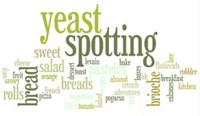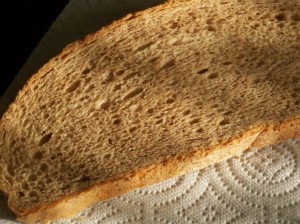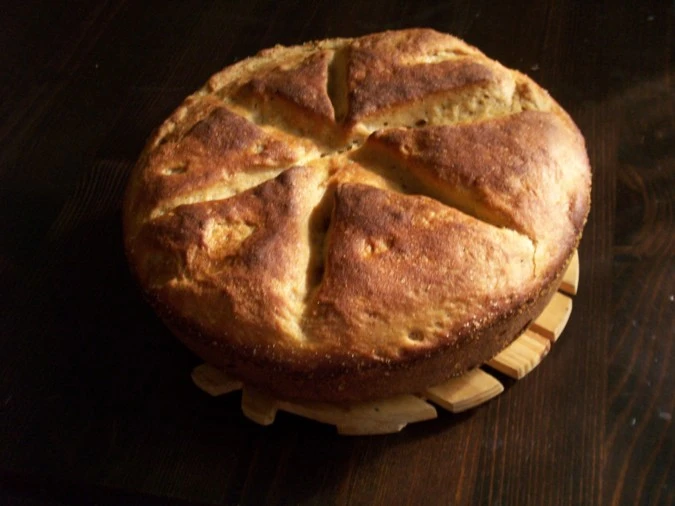
A tasty bread made with barley flour and a touch of maple syrup
Jude of Apple Pie, Patis, and Pâté is the host of bread baking day#13 (a monthly bread baking event initiated by Zorra) and proposed whole grains as a theme. Among the many recipes I had bookmarked I finally chose this one because it is made with a good amount of stone ground barley flour. Barley bread has a very long history—it is for instance often cited in the Bible. In the Book of Judges Gideon hears of a man’s dream in which a cake of barley bread went rolling down from the hill where Gideon’s army was stationed, and tumbling into the host of Midian.
Barley was grown and used for bread in many places and cultures since ancient times, including Greece and Rome, Egypt, Scandinavia, the British Isles, Mesopotamia, and East Asia. Bread made with it was usually coarse and dark and as a consequence not very appreciated, although more affordable than bread made with wheat.
This recipe calls for 50% barley and whole-wheat, and it also contains mashed potatoes and a small amount of butter and maple syrup. The result is a hearty but very tender loaf, with a thin, crispy crust and a moist crumb. The flavor of barley shines through and the subtle sweetness of maple can be detected as well.
It is perfect to accompany a thick vegetable soup, with sharp cheeses, or just simple and unadorned, to enjoy its hearty flavor.
This bread also goes to Susan’s Yeast Spotting
From the original recipe by Amelia Doddridge
In: “Liberty Recipes”, 1918—USA
Ingredients
3/4 cup (160 g) mashed potatoes (about 2 medium potatoes (Yukon Gold)
1 tbsp (15 ml) pure maple syrup (Grade B)
1/2 cup whole milk
1 tsp (5 g) unsalted butter
1 cup (120 g) whole-grain, stone-ground barley flour (Bob’s Red Mill)
1-1/4 cup (150 g) white whole-wheat flour (King Arthur’s)
1 tsp (5 g) fine sea salt
1-1/4 tsp (5 g) active dry yeast dissolved in 2 tbsp (30 ml) warm water
fine semolina for the pan
Peel the potatoes, rinse them well and dice them. Boil the potato pieces in the milk until tender, then drain them reserving the milk. Mash the potatoes through a ricer than mix in the salt, maple syrup, and butter. Add 1/2 cup of the hot reserved milk (add water to make up the measure if necessary) and set aside to cool.
Once the potato mixture is lukewarm add the yeast dissolved in 2 tbsp of warm water.
Let the mixture cool completely. Then add the flours (sifted together) and knead on low speed until the dough is well developed and just barely tacky. If the potatoes are kneaded with the flours while still warm they will turn gooey and require extra flour which will make the final result heavy.
Let the dough ferment in a covered and lightly greased bowl until doubled, then knead again briefly and let ferment again until doubled.
Preheat the oven to 375°F (190°C)
Prepare an 8 x 4-inches bread pan or a small cast iron Dutch oven: lightly grease bottom and sides of the pan and sprinkle generously with fine semolina. Once the dough is ready knead it again then place it in the prepared pan or pot. Cover and let ferment until light then sprinkle with about 2 tbsp of water and score the surface.
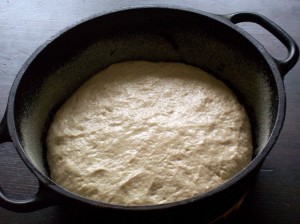
Place it in the oven and bake, covered, for 25 minutes, then lower the temperature to 350°F (180°C), uncover and finish baking until golden, about 25 minutes more.
Carefully lift the loaf out of the pan or pot with a thin metal spatula (if enough semolina was used this should be easy) and let it cool on a rack.
This is how the crumb should look: 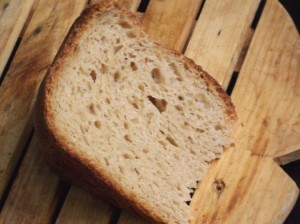






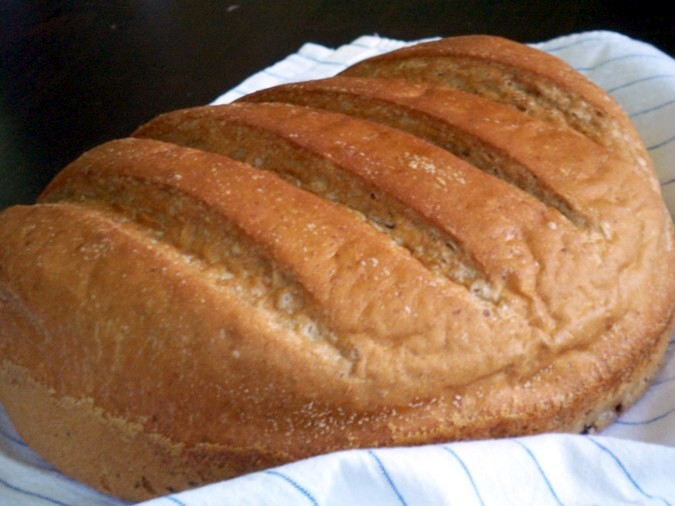
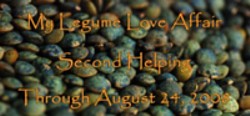 This is my entry for
This is my entry for 